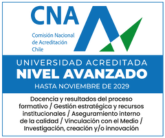Lithium manganese oxides (LMOs) are key materials due to their role in Li-ion batteries and lithium recovery from aqueous lithium resources. In the present work, we investigated the effect of the crystallization temperature on the formation by hydrothermal synthesis of LMO nanocomposites with high Li/Mn ratios. It is demonstrated that LMOs with a high Li/Mn ratio can be formed by systematically favoring the lithium-rich layered monoclinic phase (Li2MnO3) in a mixture of monoclinic and spinel crystalline phases. LMO nanocomposites have been characterized in terms of morphology, size, crystallinity, chemical composition and surface properties. Moreover, lithium adsorption experiments were conducted using acid-treated LMOs (HMOs) to evaluate the functionality of the nanocomposites as lithium adsorbent materials in a LiCl buffer solution. This study spotlights the structural, compositional, and functional properties of different LMO nanocomposites obtained by the hydrothermal method using the same Li and Mn precursor compounds at slightly different crystallization temperatures. According to our knowledge, this is the first report of the successful application of the lithium-rich Li2MnO3 phase in lithium manganese oxide nanocomposites as lithium adsorbent materials. Therefore, specific LMO nanocomposites with controlled amounts of the layered phase can be engineered to optimize lithium recovery from aqueous lithium resources.



